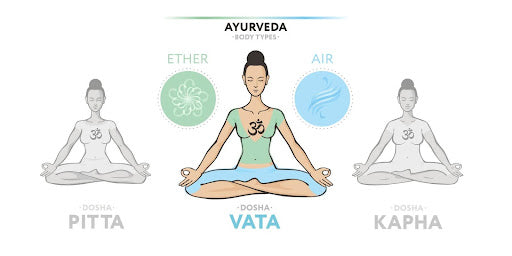
What is Vata Dosha? Signs, Symptoms, and Ways to Balance It

Highlights
Ayurveda is one of the oldest healing systems in the world, and according to this ancient science, our life is powered by three unique energies, or doshas: Pitta, Kapha and Vata.
Pitta is the dosha powered by fire and water. Its balance helps with your digestion metabolism, and keeps your energy high!
Kapha is the dosha of earth and water that keeps you steady, moisturized, and ready to heal. This can be called the dosha of grounding.
Vata Dosha is made of air and space and is the energy of movement, creativity, and change. It governs everything from your breath to your thoughts
When Vata is balanced, you feel energetic and inspired, but when it’s off-kilter, you may experience restlessness, dry skin, irregular digestion, or even insomnia.
In this blog, we bring you a treasure trove of tips on how to balance your Vata dosha, all while reconnecting and realigning your natural rhythm.
6 Vata Dosha Signs
We have listed some of the most common Vata body type characteristics:
People with Vata dosha are naturally slim and struggle to gain weight. This gives them a lightweight and delicate presence.
For people with Vata Dosh, the skin is often rough. Their complexion is tinged with brown, and their hair tends to lack natural moisture.
Vata individuals dislike cool weather and are prone to feeling the chill intensely.
Vata's body often experiences dry gums, making braces a common need.
They have light-colored, small eyes that are prone to dryness.
Vata types are grazers and, hence, follow an irregular meal schedule due to their habit of snacking.
Vata people are also likely to experience fluctuating hunger levels, which causes digestive issues and food sensitivities.
What Are The Symptoms of Vata Imbalance
Take a look at these symptoms of vata imbalance. If you happen to have these, it would be a good idea to balance your Vata dosha by adhering to the necessary steps:
When your Vata is imbalanced, you might experience constant or shifting aches in the body.
Dry skin, rough hair, and brittle nails are also symptoms of Vata imbalance.
It can also cause digestive issues like constipation and bloating. In fact, Vata Dosha causes dehydration in people despite drinking water.
Some of the most common Vata Dosha symptoms include physiological anxiety, restlessness, difficulty concentrating, trouble sleeping and panic attacks.
Vata Dosha causes people to get cold more frequently, especially in the hands and feet.
It can also cause symptoms like dry eyes, dry gums, excessive blinking and blurry vision.
If you experience several of these symptoms, your Vata dosha may be imbalanced. Incorporate warm, nourishing foods, maintain a consistent daily routine, and practice calming activities like yoga or meditation to restore balance.
3 Ways To Balance Vata Dosha in the Body
If you notice the above-mentioned symptoms of Vata Dosha, it’s a clear indicator that your Vata energy is showing up loudly and clearly! This is how you can balance this energy to reinforce holistic wellness:
Try to incorporate warm, grounding foods in your diet, like soups, stews and porridge. You can also add healthy fats and proteins to your diet through foods like ghee, butter, and sesame or almond oil in your cooking. You must avoid having raw or uncooked vegetables, as they can aggravate your Vata. Ginger, garlic, turmeric, Brahmi and Ashwagandha are some of the most sought-after Ayurvedic remedies for balancing Vata.
It is advisable to follow a steady daily routine that includes gentle exercising, meditation, and Aand bhyanga (self-massage) to bring a sense of stability to your body clock.
Shankara India has a thoughtfully curated collection of products that can help you manage Vata imbalance symptoms. The Gheesutra face emulsion, Kumkumadi oil and the Gheesutra Nourishing exfoliator are some of our personal favourites. You can explore the website to choose from a variety of options.
Conclusion
When we talk about how to balance Vata dosha, the goal is to create a sense of steadiness in every aspect of your life. This will translate into holistic wellness, which includes healthier hair and skin. By focusing on a Vata-pacifying diet, using natural remedies, and using skin care products from Shankara India that can help you handle symptoms of Vata dosha, you can bring a sense of balance and wellness to your life.
Try taking small and consistent steps and keep at it. This will bring about profound transformations in your life.
FAQs On Vata Dosha
Which oil is best for vata?
Kumkumadi oil from Shankara India is one of the best oils to manage Vata imbalance symptoms.
What is the best lifestyle for Vata dosha?
A consistent and steady lifestyle that includes a balanced diet, gentle exercising, meditation, and breathing exercises is very well suited for managing vata dosha.
What is the best exercise for Vata?
Yoga, walking, and Tai Chi are some of the best exercises for Vata.
How do you balance Vata immediately?
Eating a warm meal and doing a warm self-massage can help balance Vata immediately.

Highlights
No related blogs available.































